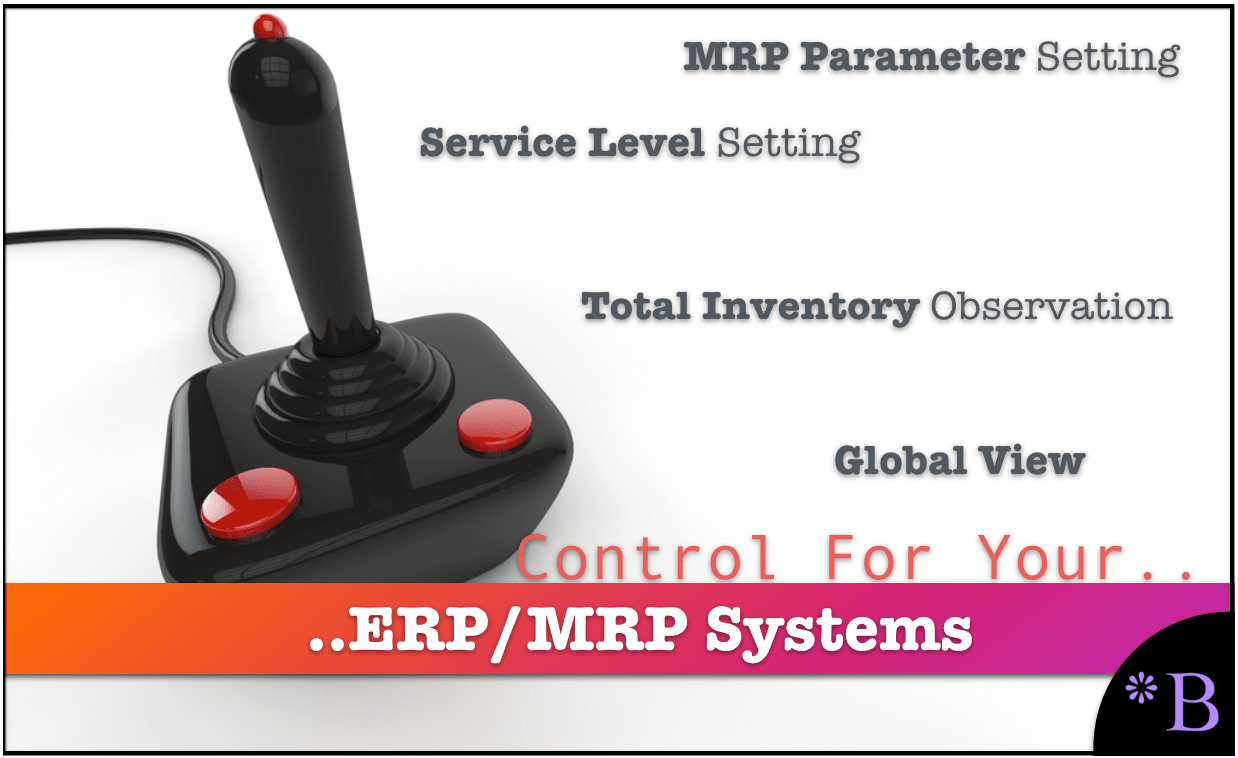Executive Summary
- This article introduces the background of MRP and S&OP Explorer.
- We cover constrained versus unconstrained forecast error and implement a flexible system for supply chain planning improvement.
Introduction
ERP systems and even advanced planning systems normally do not provide high-level descriptive statistics that are important and figuring out supply chain planning quality and areas to improve. Rather, they are focused on meeting the needs of planners often to evaluate specific product location combinations. It is surprising how many vendors have missed the critical workflows that are standard in Brightwork Explorer.
- Brightwork Explorer can tell you how efficiently your inventory is being deployed.
- It can tell you where are you over-investing in stock?
- Where are you under-investing in inventory?
We roll the overall supply plan into an inventory effectiveness score for each product location combination.
What is the overall inventory efficiency score of your supply chain planning process? Find out with the Brightwork Inventory Explorer Score. After you have determined your score, move to the Brightwork MRP Explorer to improve your score by making changes to service levels, days of supply, and MRP parameters.
What Are MRP System Parameters?
Supply planning or MRP system parameters are found on the product/material/location master within supply planning applications. Examples of supply planning or MRP system parameters are:
- Reorder Point
- Lot Size
- Planning Time Fence
- Rounding Value
- Safety Stock
Sometimes people will refer to these values as MRP system parameters. They apply to any supply planning method used.
What Do Books Say About Setting MRP System/ Supply / Production Planning Parameters?
Books on MRP and supply and production planning offer explanations of parameters. They also provide the various methods of calculating them as if they are providing a toolkit. They do not say which combination of parameters should be set.
How MRP System Parameters are Ordinarily Set
Companies will often spend a good sum of money on their MRP system. But they usually do so without investing the effort into setting their parameters.
- When a new system is implemented, it is more common than not that the old system’s parameters are only taken and placed into the new system.
- Software companies provide little guidance regarding parameters. Typically this means proposing that the business has all the answers in this area. Next, the software company has made all of the fields available in their application to feel their job is done (which is a good amount of truth to this position).
- The common problem is that the business often lacks the tools to appropriately set the supply planning parameters and often does not centrally control the settings.
At one of my previous clients, which had a high forecast error, a big part of what supply planning did was look at the forecast. If they disagreed with the forecast, they would change the coverage profile. This coverage profile controls safety stock. The safety stock and other parameters should be changed periodically, not to adjust to the forecast.
Lack of Consideration for Relative Inventory
Calculation of the inventory available for safety stock and cycle stock. The next step is the inventory assignment on a relative basis—a weakness of many of the inventory parameters when calculated individually by the system.
- All inventory parameters should be calculated based upon the relative consumption of whatever the resource limitations are.
- In some cases, this will be inventory dollars; this will be pallet spots in other cases.
Asking the Right Question on Relative Inventory
The question is not so much what is the optimal inventory parameter setting (PLC/SKU) for a particular PLC. The question is given a limited amount of resources — how should that resource be allocated or spread over the overall product location database.
The fact that the vast majority of companies do not set their inventory parameters leads to manual intervention. The result is too much inventory first proposed. The values are often decreased in a piecemeal fashion. If a policy cannot consistently adhere to, it is inefficient, and a new policy should be considered.
The reason for this is that the supply plan is generated assuming there are infinite inventory resources. All that is necessary is to calculate to inventory resources required for a single PLC/SKU.
Should the forecasting process be held accountable for forecasting demand or for forecasting the constraints of the company? Because the demand history is not adjusted upward in the right places, the constraint (saved as the booked sales order) becomes the previous demand.
Constrained Versus Unconstrained Forecast Error
The vast majority of companies maintain their sales history. Their sales history is what was sold. This is called the constrained forecast. The only constraining capacity is within the supply planning application (either ERP or external supply planning application).
This presents several problems. One is that the demand is higher than sales orders. The sales orders are what was sold, but it was not necessarily what was demanded. Let us use an example:
- Company A created a forecast of 10 units for February at a product location.
- Due to either production capacity constraints or supplier capacity constraints, only five units could be made available for February.
- In this scenario, there are no backorders as the customer goes to a different seller (any number of scenarios are possible, the customer could substitute, they could get backorders, or they could go to a different customer, or they could postpone their purchase. But here we will go with the seller losing the sale and not getting the sale in later months)
The measure of forecast accuracy is the measure of the effectiveness of the overall forecasting process. The measure of a specific forecast accuracy input, such as the accuracy of the sales forecast input, is a measure of the effectiveness of a subset of the forecasting process. If the overall forecasting process (in this case) would have attained a 100% forecast accuracy, but due to constraints, the resulting forecast accuracy is 50%, then the forecasting process is unfairly maligned. And here are several problems with this:
- It will provide a false signal that perhaps the forecasting process should be addressed when it is perfectly fine when in fact (in this case).
- It will mean that the demand history is only what the company did sell, not what the company could have sold. This means that there will have to be a more manual intervention into the forecast as the statistical methods that are applied will reproduce too low of a level. It will also mean inaccurate signaling as items that were substituted for the primary item demanded will be over forecasted in the future (at least statistically). In contrast, the initially demanded item will be under forecasted in the future (at least statistically).
This is the problem with only measuring unconstrained forecast error. But the problem is what to do about it. Companies normally do not have a good way of measuring lost sales; the forecast error is exaggerated to the degree that the company is constrained.
S&OP to the Rescue?
It is often stated that a “good S&OP process” addresses this issue. But does it? An S&OP process will bring the forecast down to meet the capacity. That balances the plan, making sure it is attainable, but that does not, in fact, address the issue. In fact, it hides the issue.
Addressing the issue would mean keeping a separate data stream that accounts for lost sales. It also means having a way to measuring the forecast error of lost sales. This can come from estimating lost sales from the demand history based upon inputs from order management, as this type of information is only very rarely inside of the order management system itself.
Once the data is obtained, now the error measurement is where Brightwork Explorer comes into play. Lost sales + sales orders can be fed into Brightwork Explorer, and its error checked against the forecast. This provides a far more accurate representation of the relevant forecast error and allows companies to focus on forecasting shortcomings rather than be misdirected into focusing on areas where the unconstrained forecast is inaccurate due to capacity constraints.
Using the Brightwork MRP + S&OP Explorer
The Brightwork MRP Explorer does something that no other software on the market does. That is right, not software that uses MRP, heuristics, allocation, cost optimization, or inventory optimization to set MRP parameters in concert with objectives. We would know as we have written books on every one of these methods.
In fact, we developed the Brightwork MRP Explorer after working on and reviewing many projects with the approaches mentioned above.

Brightwork MRP Explorer is not designed to replace the supply planning system you have. We do not create planned production orders or purchase requisitions. Instead, we tune your system, making it better, and allowing it to run with far less effort and maintenance, freeing up your planners to focus on specific items, as the overall system is managed for them.
